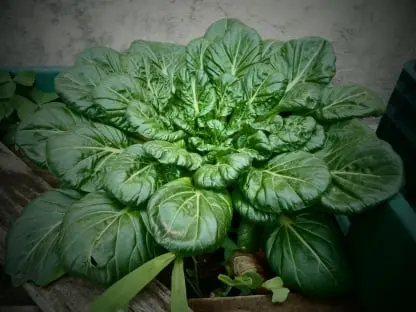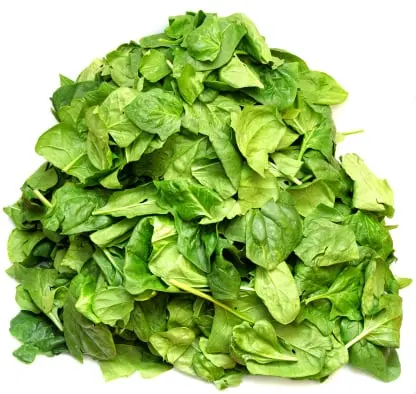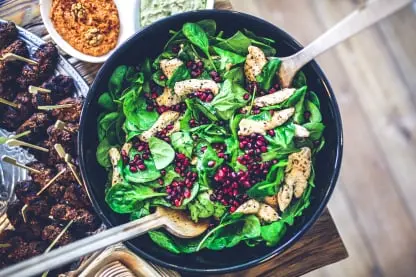Spinach Fresh Produce Software:
Spinach Fresh Produce Software: Spinach packaging app manages all spinach packaging processes including spinach quality control, spinach inventory, and spinach sales logistics shipping.

Spinach Fresh Produce Software for accurate order filling & production
View Fresh Produce Software Specifications.
Spinach packing for RTE products:
One of the most frequent presentations in fresh is the arrangement of loose leaves or whole bushes in bunches. Pre-packaging is carried out in trays covered with plastic film or in plastic bags. In the last few years we have seen the rise of a tendency to sell loose spinach leaves, already washed and packaged in plastic bags. The packaging is carried out in boxes containing a maximum of 10 kg of homogenous content, that is to say, either loose leaves or whole plants.
Fresh-cut spinach leaves were stored for 4 days at 15C and 75% relative humidity under modified atmosphere packaging to assess the impact of differential in-packgas atmospheres generated through different packaging films and variable in-pack weight on the quality of stored produce. After 4 days of storage, retention of chloro-phyll, b-carotene and ascorbic acid was better in low-density polyethylene (LDPE)packages than in polypropylene (PP) packages. LDPE film-packaged samples had higher phenolic content than PP film-packaged samples. Low in-pack O2(1–2 kPa)along with the buildup of CO2(8–10 kPa) seems to have enhanced the retention of antioxidant components, i.e., b-carotene and ascorbic acid, in LDPE packages. This helped in chlorophyll retention and also prevented formation of oxidation com-pounds of phenols that otherwise caused browning of cut surfaces. Thus, O2andCO2permeability of packaging film or in-pack weight of produce might be such that equilibrated O2partial pressures remain near to 1–2 kPa so as to affect a beneficial increase in the phenolic content along with concomitant retention of chlorophyll.

Spinach Fresh Produce Software manages food safety
Fresh-cut spinach leaves have received an enormous demand due to their utility in various traditional Indian preparations. Shelf life and quality of fresh-cut produce may be greatly reduced due to high rates of respiration. Traditional packaging and handling techniques reduce the shelf life and sensory quality of fresh-cut spinach. Temperature control and atmospheric modifications help to maintain produce quality by reducing respiration rate and enhance shelf life by minimizing the adverse effects of cutting. This research focused on evaluation of respiratory behavior of fresh-cut spinach leaves at a temperature commonly encountered during transportation and retail distribution, i.e., 15C, and the effect of different polymeric films and in-pack weights on produce quality. The results of the study suggest that packaging of fresh-cut spinach in polymeric film packages could maintain the sensory quality and reduce degradation of various physicochemical constituents. Utilization of the results for proper design of modified atmosphere packages for this highly perishable produce can prove to be extremely beneficial for safe storage and transportation to urban retail mar kets. Vegetables occupy a significant place in human diet and provide vitamins and minerals essential for human health and growth. With the increasing availability, a shift in the consumption pattern in favor of vegetables is being observed in all the socioeconomic groups of people living in either rural or urban areas (Kumar et al.2004).
The biggest problem faced by the food industry in South Africa is the maintenance of quality of fresh produce during post-harvest storage (Munhuweyi et al., 2016).Attempts to reduce losses and maintain quality of fresh food, primarily fruits and vegetables, during postharvest storage has been a challenge and priority for the food industry (Velickova et al., 2013). Strategies to prolong the shelf life of fresh-cut vegetables during storage are necessary to pre-serve their nutritional value and to assure food safety (Conte et al., 2008; Ninfali and Bacchiocca, 2004).Modified atmosphere packaging (MAP) is the technique of sealing actively respiring pro-duce, fresh fruit and vegetables, in polymeric film packages to achieve the modification of the O2and CO2levels within the package atmosphere (Mir and Beaudry, 2004).

Spinach Fresh Produce Software for reduced food & fresh produce waste
The MA packaging technology is said to be efficient in maintaining shelf life of fresh produce during storage (Sandhya, 2010).Church and Parsons (1995) reported that the combination of oxygen (O2), nitrogen (N2),and carbon dioxide (CO2) is frequently used when operating the MAP during storage, based on its efficiency and specific effect it has in slowing down the metabolism process of the produce. The high CO2or low O2concentrations diminish respiration rate, thus, reduces the occurrence of aerobic bacteria and deterioration rate of the stored product (Babic and Watada, 1996).The concentrations of O2in MAP during storage of fresh-cut fruits and vegetables for both quality and safety should range between1% and 5% (Sandhya, 2010), whereas CO2concentrations should be above 10% (Zagoryand Kader, 1988). Izumi et al. (1997) demonstrated the benefits of low O2atmosphereson spinach during storage.
Ready-to-eat (RTE) leafy vegetables are the fastest increasing sector of the UK and Europe markets. Spinach (Spinacia oleracea) is one of the main leafy vegetables contributing to the RTE industry. Due to its tender and soft texture, spinach leaves tend to undergo different degrees of injuries during processing steps which affect their quality and shelf life. In this study, the effect of compression on quality degradation of spinach leaves during storage was investigated. Spinach leaves were subjected to compression using Universal Testing Machine where Young’s modulus for spinach in bulk amount; imitating packaged spinach in the industry was evaluated. Visual appearance was assessed by Population test where leaves were classified into categories according to degree of damage and percentage of deterioration was evaluated by analyzing RGB images using ImageJ.